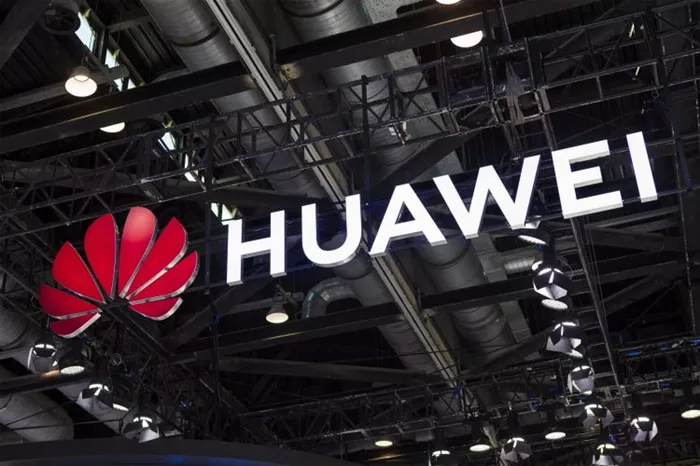A few days after two aircraft carriers of the Chinese People’s Liberation Army appeared in the Western Pacific, the Taiwan region took an action that has drawn widespread attention. According to a report by Taiwan’s “China Times” on the 16th, as previously disclosed by Reuters, the Taiwan region has updated its “export control list” and included mainland enterprises such as Huawei and Semiconductor Manufacturing International Corporation (SMIC) on it. Additionally, multiple overseas subsidiaries of Huawei in Japan, Russia, and Germany have also been added to the updated list.
The “Ministry of Economic Affairs” of the Taiwan region stated that if local manufacturers wish to “export” to entities on the control list, they must obtain relevant licenses issued by the “Customs and Trade Administration Bureau” in advance before conducting any export activities.
On the evening of the 15th, the “International Trade Department” of the Taiwan region’s “Economic Affairs Bureau” responded. It claimed that the department regularly holds cross – ministry review meetings. Based on the authorization of Article 13 of Taiwan region’s “Trade Law,” it discusses the update of the “List of Strategic High – Tech Goods Export Entities Management.” The relevant update operations mainly refer to the sanctions and regulations of the UN Security Council and some external forces. So far, 10,800 entities and individuals have been included in this list. This time, the “International Trade Department” held a cross – ministry review meeting and “based on so – called considerations of preventing weapons proliferation and other false pretexts, 601 entities, including those from Russia, Pakistan, Iran, Myanmar, and mainland enterprises like Huawei and SMIC that they wrongly associated with so – called weapons proliferation activities, have been newly added to this list.”
Background and Analyses
Before the issuance of this ban, two Chinese aircraft carriers simultaneously appeared in the Western Pacific for the first time, which caught the attention of people in the Taiwan region. At the same time, the United States and China completed a new round of economic and trade negotiations in London. Although both sides reached a trade framework agreement, they remained deadlocked on key issues such as rare earths and chips. Bao Chengke, Vice Director of the Shanghai East Asia Research Institute, analyzed in an interview with Lianhe Zaobao on the 12th that the mainland released a financial policy to support Taiwanese enterprises in raising funds on the mainland. This was something that the forces in the Taiwan region did not want to see, so they expressed their dissatisfaction by suppressing mainland technology enterprises through this ban.
Bao Chengke also pointed out that the control of high – tech products might be the main content of the next round of Sino – US trade negotiations. The Taiwan region’s announcement of this “export ban” at this time “also shows its attempt to cooperate with external forces against the mainland.” From an economic perspective, some leading semiconductor enterprises in the Taiwan region, such as TSMC, may have realized that Huawei may soon pose competition to them, which could be another reason for this ban.
Impacts and Reactions
Some mainland investors are concerned about the potential impact of this “export ban” on the semiconductor industry in the Taiwan region. Chen Zengang, a senior industry analyst in the Taiwan region, stated that over the past few years, more than 30 Taiwanese companies have quietly supplied goods to Huawei, with transaction amounts exceeding tens of billions of New Taiwan dollars. The act of the Taiwan region listing Huawei and SMIC is bound to have a certain impact on these Taiwanese companies. According to statistics from the “Finance Department” of the Taiwan region, in 2024, the largest “export” market for the Taiwan region was the Chinese mainland and Hong Kong, accounting for 31.7% of the total. The “export” volume to the Chinese mainland and Hong Kong was 150.619 billion US dollars, of which approximately 60% were electronic products.
Many netizens in the Taiwan region expressed dissatisfaction with this ban, questioning why the forces in the Taiwan region would involve themselves in such a wrong act. Some even described it as “the local authorities digging their own graves.” Others were worried about possible countermeasures from the mainland, fearing that many industries in the Taiwan region would suffer.
Some industry insiders believe that this latest regulatory measure will not have a significant impact on Huawei and SMIC. Taiwan’s Chih – Shi News Network reported on the 16th that this regulation mainly targets products “exported” from the Taiwan region to the mainland for these two companies. If Taiwanese manufacturers produce and deliver locally on the mainland, they will not be subject to this restriction.
Based on the current industrial situation, since the United States imposed sanctions on Huawei and SMIC, these two enterprises have been vigorously building their domestic supply chains and supporting mainland suppliers. In areas such as semiconductor components, chips, components, optical lenses, bearings, heat dissipation, and power supplies, competitive mainland suppliers have emerged. Currently, there are not many Taiwanese companies with significant competitive advantages left in these fields, only a few like some specific enterprises. However, mainland suppliers have already entered the supply chains for these products.
Related topics:

